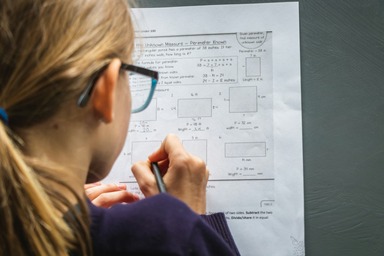Students who struggle to remember what they’ve learned often feel frustrated and discouraged, impacting their confidence and academic progress. As the director of a tutoring center, I worked closely with one student with prolonged working memory. For this student, it wasn’t that they couldn’t understand new information; they needed extra time and specific strategies to retain it. We found that by breaking down tasks into smaller steps, using visual aids, and reinforcing learning through repetition, this student’s memory, confidence, and performance improved.
Parents play a crucial role in supporting their children’s memory, too. In this post, we’ll explore how memory works, the different types of memory involved in learning, and strategies that can make a difference at home. Understanding and supporting memory practically can help your child feel more successful and engaged in their education.
Introduction to Memory and Learning
Memory is the foundation of learning, allowing children to hold on to new information, make sense of it, and build upon it over time. For children from kindergarten through 12th grade, memory plays an essential role in academic success—it enables them to recall facts, develop skills, and deepen their understanding across all subjects. Think of memory as a bridge: it connects new knowledge to what a child already knows, making learning more meaningful and applicable in different situations.
When children learn something new, they don’t just memorize facts in isolation. Instead, memory allows them to see patterns, make connections, and apply what they’ve learned in various contexts. For example, when children learn basic addition, they use memory to relate it to similar skills (like subtraction) and later apply this foundational math knowledge to solve more complex problems. Memory also allows children to retrieve and use information on a test, in a project, or even during a class discussion.
Understanding how memory functions—and how to support it—can make a big difference in helping kids learn, enjoy learning, and feel confident in their abilities. For parents, knowing a bit about memory can be the key to helping their children retain information more effectively so that learning feels like a journey rather than just a series of tasks.
Types of Memory and Their Role in Education
Memory operates in different forms, uniquely influencing how children learn, process, and retain information. By understanding these types of memory, parents can better support their children’s learning and help them strengthen the skills needed for academic success.

Sensory Memory: When children first encounter information, it enters through sensory memory. This is a brief and immediate response to what they see, hear or touch. Sensory memory captures these details for a few seconds, allowing the brain to decide what’s worth keeping. Teachers often use sensory experiences to capture attention in a classroom—vibrant visuals, engaging sounds, or hands-on activities (like counting with blocks) can make concepts more memorable.
Parents can support sensory memory at home by using engaging materials like colorful flashcards, interactive online resources, or even outdoor activities that connect to what their child is learning.
Short-Term (Working) Memory: Children temporarily hold and manipulate information in short-term or “working” memory. This type of memory is crucial for tasks that require following instructions, solving a math problem, or even writing a paragraph. However, working memory has limited capacity—it can only hold a few pieces of information at once, which can be challenging for younger children.
Parents can break tasks into smaller, manageable steps, use visual aids (like diagrams or checklists), or repeat instructions to reinforce understanding. Encouraging children to “teach back” what they’ve learned is also helpful, as it strengthens recall and reinforces their grasp of the material.
Long-Term Memory: Long-term memory is where knowledge is stored more permanently, allowing children to recall facts, skills, and experiences over days, months, or even years. Within long-term memory, different types serve distinct purposes in education:
Semantic Memory
- Stores factual knowledge, like vocabulary words, dates, and formulas.
- Support: Use review games, flashcards, or quizzes to help reinforce and retrieve information.
Episodic Memory
- Holds memories tied to personal experiences, like a science project or a field trip.
- Support: Create meaningful connections by linking learning to family outings or real-life experiences.
Procedural Memory
- Stores skills and processes like reading, writing, or riding a bike.
- Support: Encourage low-pressure, regular practice to build automaticity (like reading aloud or practicing basic math).
Understanding these types of memory can empower parents to tailor their support to their child’s needs. By integrating these memory-friendly strategies into everyday routines, parents can help children retain what they learn in a meaningful, lasting way.
Memory Tips and Techniques for Parents
Supporting your child’s memory doesn’t have to be complicated! Here are some simple, research-backed techniques to help them retain what they learn in fun and engaging ways:

Spaced Repetition
- Instead of cramming information in a single study session, space out retrieval practice over time. Revisiting topics regularly strengthens memory connections and helps information move into long-term memory.
- Example: Review math facts or vocabulary words every few days rather than trying to memorize everything in one go.
Storytelling
- Storytelling makes information easier to remember by weaving it into a narrative. This technique is beneficial for subjects like history or science, where concepts can come to life through stories.
- Example: When learning about historical events, create a simple story that links the events together in a way that’s engaging and memorable.
Mnemonic Devices
- Mnemonics are memory aids that make information easier to recall. This could be an acronym, a rhyme, or a song that helps children remember facts.
- Example: Use a rhyme like “I before E except after C,” or create a song to remember multiplication tables or planets in order.
Teaching Back
- Encourage your child to “teach back” what they’ve learned by explaining it in their own words. This reinforces understanding and reveals any gaps in knowledge.
- Example: After a school day or study session, ask them to summarize what they learned. This helps with memory retrieval and boosts confidence.
Daily Reviews
- Create a routine of briefly reviewing what your child learned each day. This can be a simple conversation during dinner or bedtime, reinforcing the day’s new knowledge and experiences.
- Example: Ask questions like, “What was one new thing you learned today?” or “Can you tell me about something interesting from class?”
These techniques are easy to incorporate into daily routines and can help make learning more enjoyable and memorable for your child. By using these strategies, you’re helping them build stronger memory skills that will support them well into the future.
Recognizing and Supporting Memory Challenges
It’s natural for children to forget things occasionally, but if memory issues interfere with learning or daily routines, it could indicate a memory challenge. Here are some signs to look for and strategies to help.
Signs of Memory Struggles
- Frequently Forgetting Instructions
- If your child often needs reminders for tasks right after they’re explained, it may indicate trouble with working memory.
- Difficulty Recalling Information
- Struggling to remember facts or lessons they recently learned can suggest challenges with long-term memory retention.
- Trouble Following Multi-Step Directions
- When children have difficulty keeping track of steps in order, they may need support with memory and organizational skills.
- Repeatedly Misplacing Items
- Frequently losing track of personal items, like homework or books, can be another sign of memory challenges.
How Parents Can Support
Break Down Instructions
- Give tasks one step at a time or break assignments into smaller chunks. This helps reduce the memory load and makes it easier for children to remember each part.
Use Memory Aids
- Visual aids like charts, checklists, or sticky notes can remind children of steps in a process or important facts they need to remember.
- Create fun reminders, like using rhymes or songs to remember specific information (e.g., steps for math operations).
Encourage Repetition and Routine
- Consistent routines help reinforce memory. For example, if they need to remember homework materials, set up a daily checklist to run through before leaving school or the house.
Teach Memory Strategies
- Techniques like visualization (picturing what they need to remember) or associating information with a color or image can help. Mnemonics and “mind maps” can also make information easier to recall.
Partner with Teachers
- Reach out to teachers if memory issues seem to persist. They can offer insights from the classroom and work with you to reinforce memory strategies at home and school.
By recognizing and addressing memory challenges, parents can give children the support they need to feel more confident and successful in learning and everyday life.
Summary: Strong Memory Strategies for Learning Success
Memory is a powerful tool that enables children to learn, connect ideas, and grow academically. Parents can better support their child’s educational journey by understanding the different types of memory—sensory, working, and long-term—and their role in learning. Simple strategies like breaking down tasks, using repetition, and creating engaging ways to remember information can make a difference, especially when memory challenges arise.
With a few practical techniques and a supportive approach, you can help your child build stronger memory skills that will benefit them for years to come. Remember, learning and memory go hand-in-hand, and by fostering both, you’re setting up your child for greater confidence and lasting success in school and beyond.

